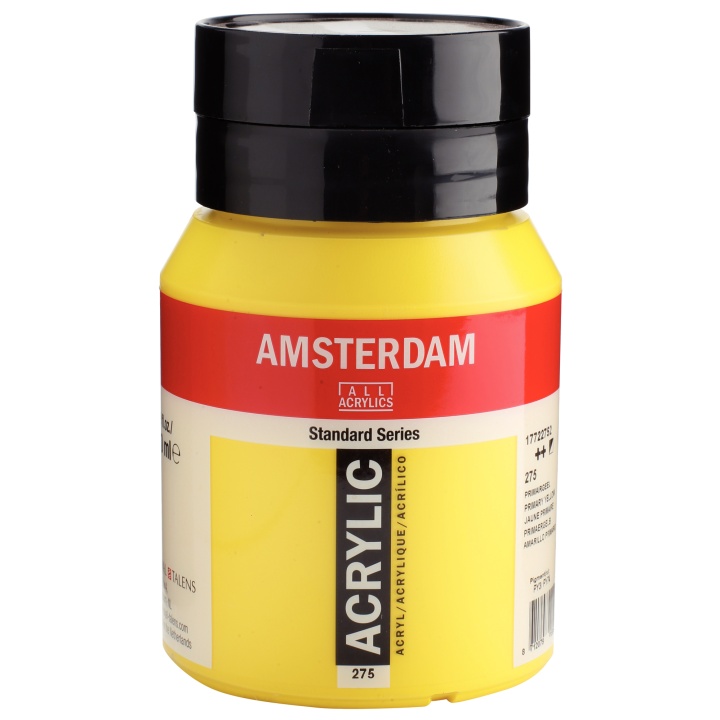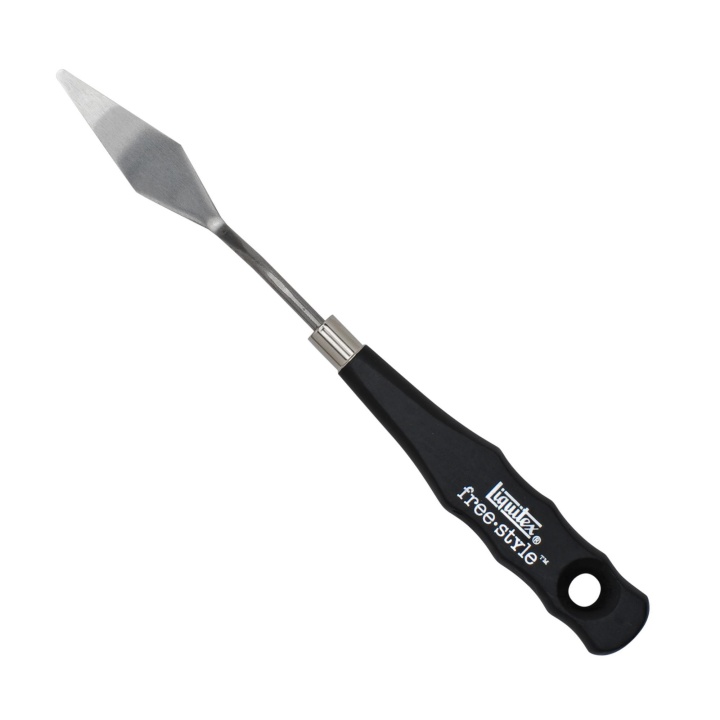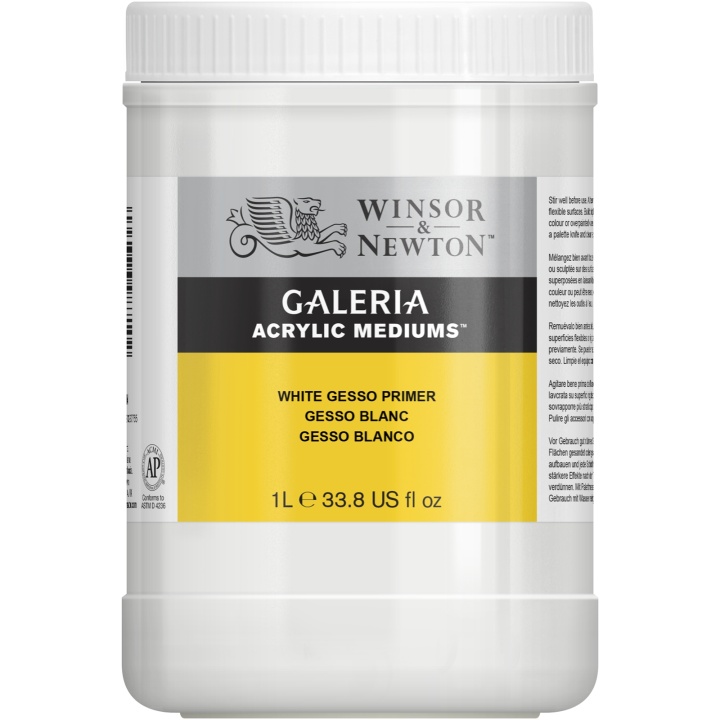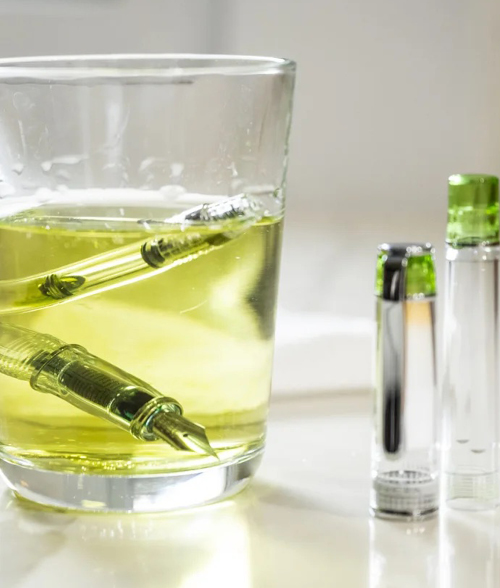Start painting with acrylic paint
Artist Amanda Egnell’s beautiful acrylic paintings depict nature from a bird’s eye view. From her gallery in Gothenburg, she spends her days creating abstract paintings with beautiful colour combinations. Learn some of Amanda’s best tips to get started with your artistry – perhaps you will dare to try out some new techniques to take your work to the next level.
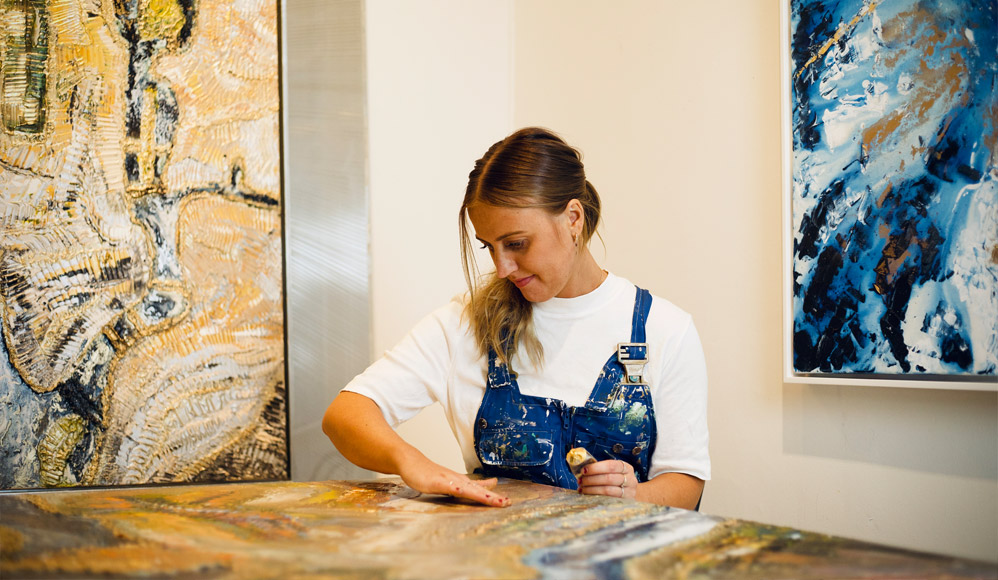
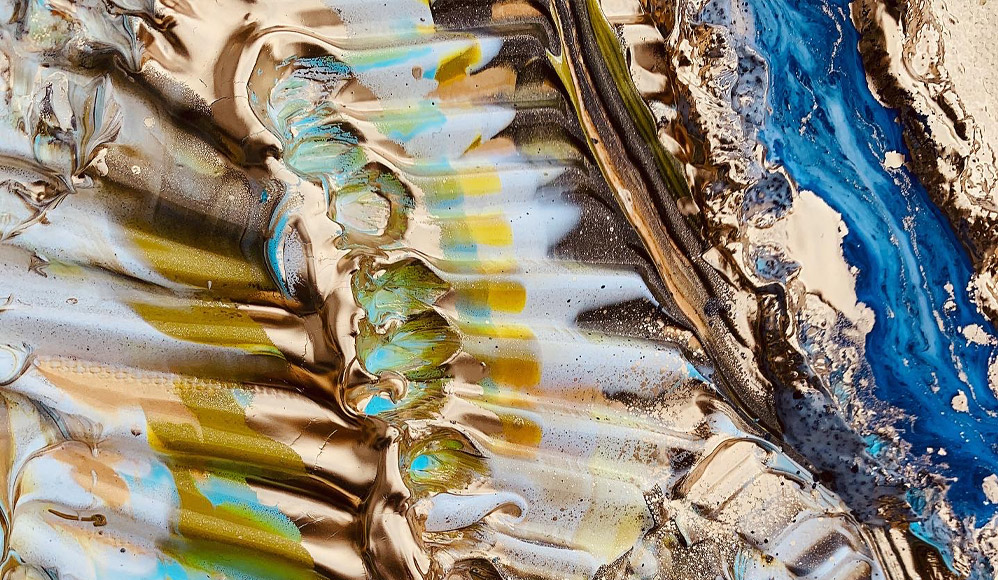
Where does your interest in art come from?
I have always been a creative person with a driven personality and a need to create things. I have always had a lot of ideas inside of me that simply must come out. For many years, art was on the back burner while I was working and going to school, but about a year ago I started taking my artistry more seriously and opened my own gallery in Gothenburg. I have been a full-time artist for almost a full year now, and I love it and the freedom it gives me.
What do you wish to communicate with your art and where do you find your inspiration?
In my art, I depict nature from a bird’s eye perspective. I often paint from an impulse and an instinct, and I always trust the process. I also find inspiration from my travels. As soon as I get home from a trip, I usually find myself full of new ideas.
What are some tips for a person who wants to begin painting?
You can wait with buying all the different colours. You will get very far with some basic colours like white, yellow, red, and blue. My favourites are Titanium white, Cadmium yellow, Cadmium red, Alizarin Crimson, and Phtalo blue. That way you will save some money and as a bonus you get to learn how to mix colours – which is super fun to do and it will make you an even better artist. When it comes to specific brands, my favourites are Amsterdam, Liquitex, Winsor and Newton. Their colours can be found in both studio and artist quality. Try challenging yourself and use something else than brushes – it is very easy to get stuck with just brushes. I love palette knives when I use acrylic paint. The palette knife comes in several sizes and designs. With a palette knife, you can make a layer of wet paint on top of another layer of wet paint, without them dissolving into each other. You can literally create how many layers and coatings you like. So, try it out and give yourself a promise not to use brushes for a while and only use palette-knives. Or why not try different sponges or using nothing but your fingers.
When I have had art evenings in my gallery, people sometimes get frustrated because their final painting does not look like they had envisioned it in their heads This happens to me as well sometimes. A tip is not to regard it as a failure. Instead, keep creating and dare experimenting with new motives and techniques. It does not matter if your painting changes, look at it as part of the creative process. A painting that was supposed to depict a lake can become a beautiful horizon – perhaps that painting turns out to be even more beautiful than what the lake would have looked like. Let whatever happens happen, and enjoy every part of your painting. Trust the process and trust your instincts.
Can you tell us about your creative process – from an empty canvas to a finished painting?
My creative process usually begins a few days or weeks before I start painting. It is all in my head. When I have processed the idea, I go to my gallery and pick out everything I need. Usually, I listen to music or a podcast as I am painting. It gets me relaxed. I usually start with priming the canvas with a specific acrylic primer. Usually that means an acrylic based Gesso, which works like an undercoat. It is an important step because it makes the paint stick to the canvas easier, without losing a lot of paint due to absorption. Thereafter I usually outline my painting straight on the canvas. I prefer drawing with coal as I find it easy to work with. Furthermore, I split the canvas in different sections and make a small note about what colours I want where. After that, I bring out the colours. I use a large amount of acrylic paint to create layers and I use palette knives or my fingers. I pull the colour in different directions and angles to create different dimensions in the painting. I work with a lot of paint and put several coatings on top of each other to get a beautiful texture. Some areas I shade to create depth and variations. When the painting is finished and dry, I treat it with a UV product to protect it from the sun and dirt.
What advice would you like to give other artists?
You need to trust yourself because it is all there inside of you. Let whatever happens happen and trust the process and whatever comes out of it. You are the best at what you are doing and that is what makes you unique.
Amanda Egnell
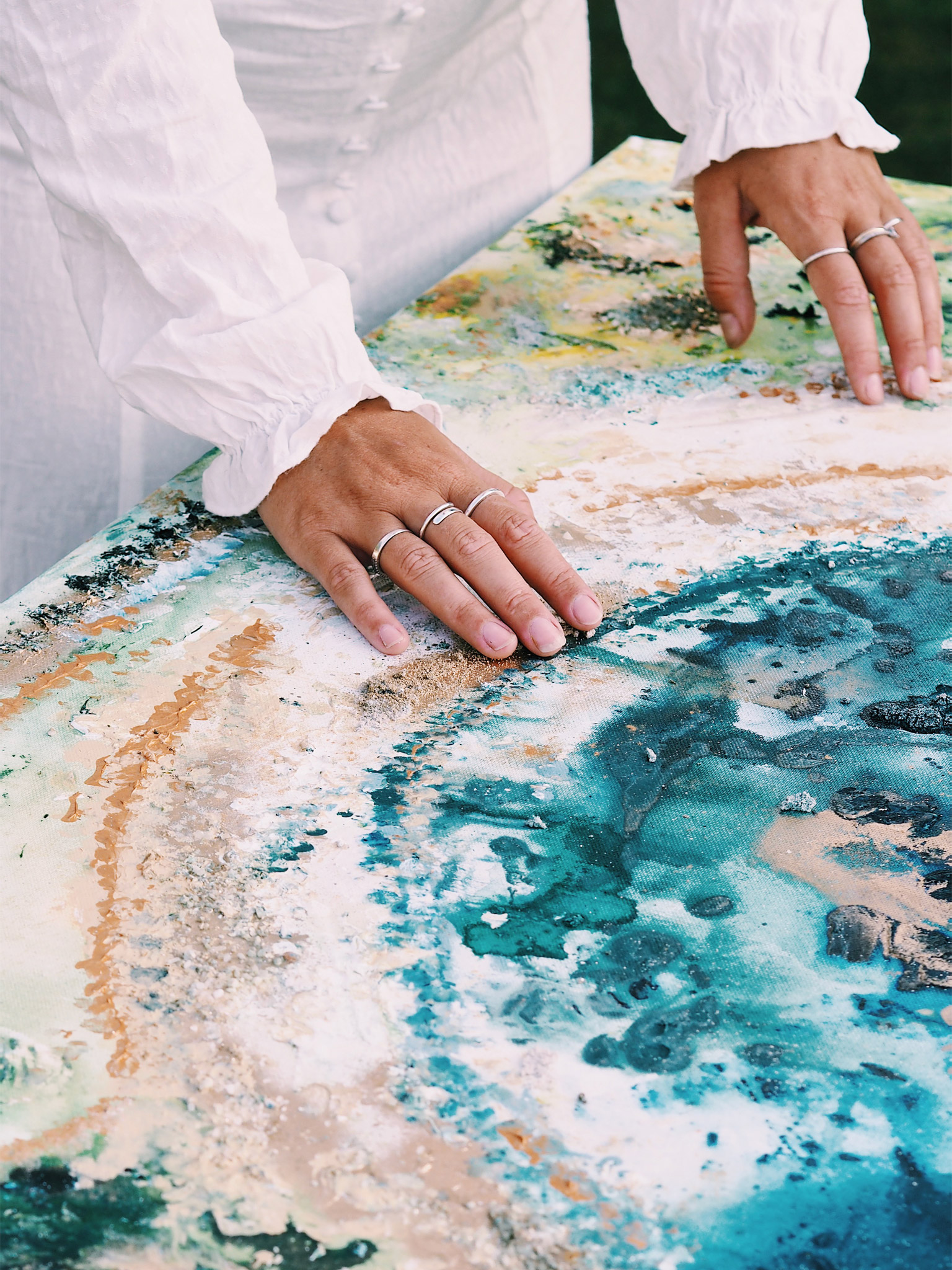
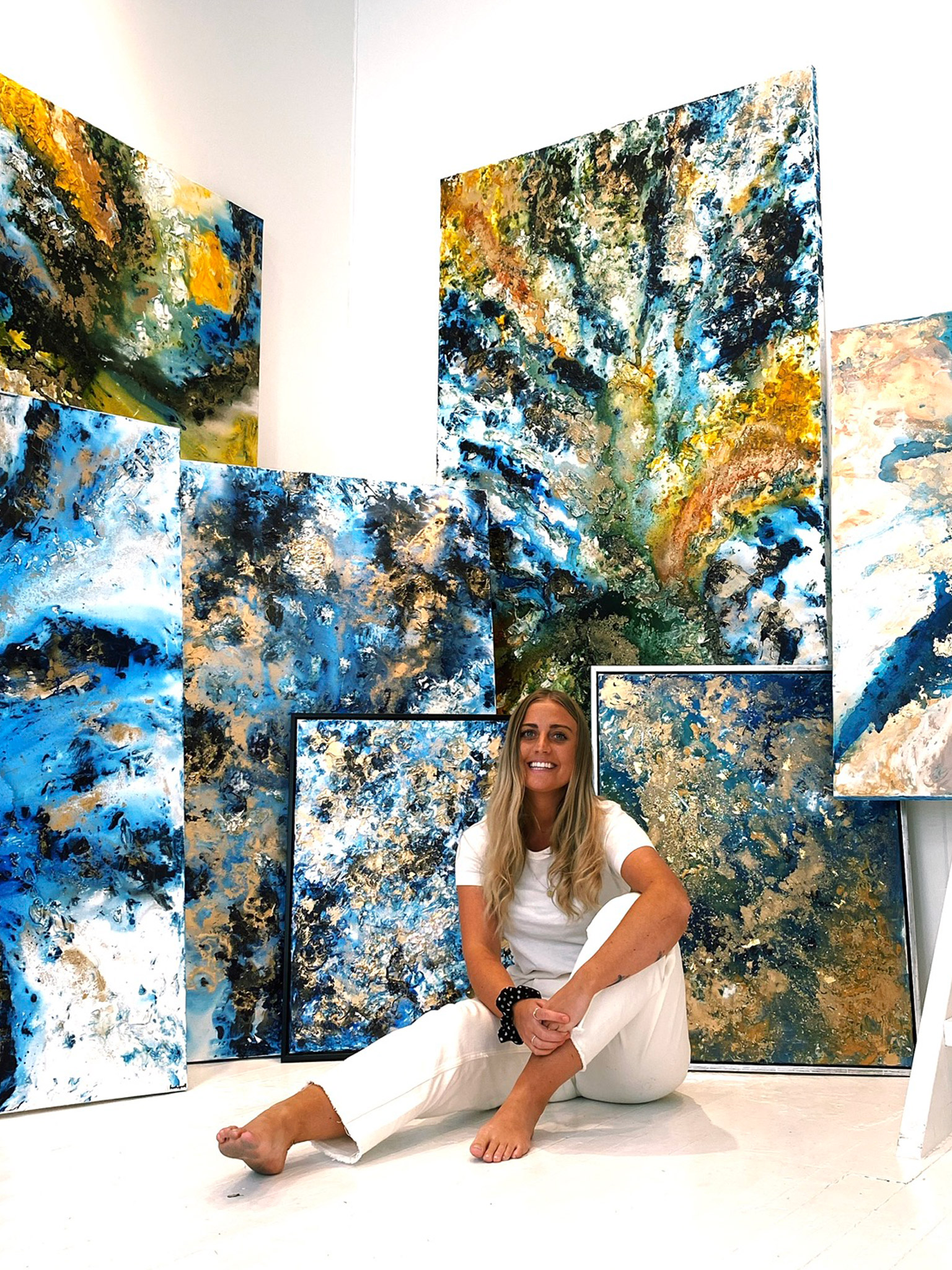
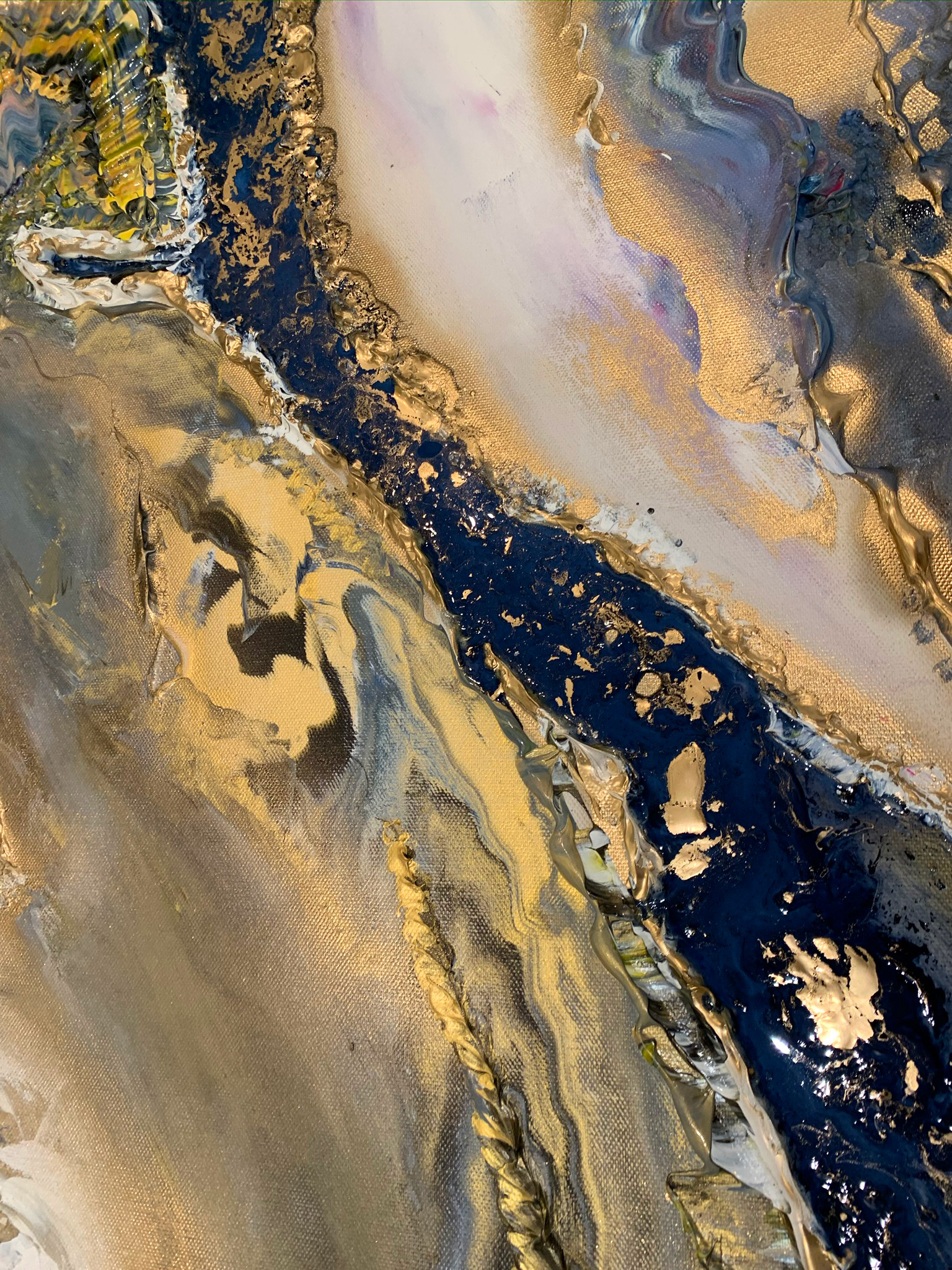
 United Kingdom (GBP)
United Kingdom (GBP)
